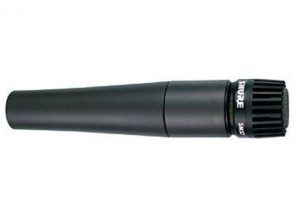Recording Philosophy
When recording technology was first invented it was being publicized as a technology that could perfectly recreate ‘real life’. In order to convince the public that this was true, Thomas Edison hired vocalists who trained their voices to sound like the recorded versions of themselves. Since it’s inception, the recording arts have been polarizing: some people believe that recording should try it’s best to recreate the natural world, while others believe it is an instrument. Like me, your opinion probably falls somewhere in between these two extremes. One the one hand, I think it is very important to fully understand the recording process so that we can get the best possible recordings. On the other hand, I think there are many sounds that do not exist in our natural world that are very pleasing.
Please take the time to learn some history about the art in which you are about to pursue:
1: High Fidelity Recording
2: The Studio as an Instrument
Gain Structure
- Acoustical Energy
Sound is simply our perception of acoustical energy (sound energy): energy that is produced when an object vibrates. The sound vibrations cause waves of pressure that travel through a medium, such as air, water, wood or metal. Sound energy is a form of mechanical energy. The above video is a great way to visualize sound. This art form is called cymatics.
2. Acoustical Energy to Electrical Energy

In order to capture acoustic energy we must first convert it into an energy that can be stored. This is done through microphones. There are a variety of types of microphones and technologies that we will discuss later in the course, but they all preform the same function; they are transducers.
A microphone does one simple thing – convert sound into an electrical signal so it can be amplified, recorded, or transmitted. The transducer is the part of microphone actually detecting and converting the sound waves. This is also sometimes called an element (from the Shure website).
3. Pre-Amplification
Operational (Nominal) level is the level that a specific piece of audio equipment needs in order to behave consistently. If a level is too low, the audio will become noisy. If a signal is too strong, it will become distorted.
The process/device that brings mic level up to operational level is call a pre-amp or pre-amplification. Beginning sound engineers often confuse how loud or soft something sounds compared to the actual technical level.
4. Electrical to Digital (A/D Conversion)
Before computers were used in recording, everything stayed in the electronic realm. However, almost all recording that exists today stores information on a computer. Since computers only ready digital code (usually binary) then we need a way to convert our electrical representations to digital. This is achieved through the process of Analogue to Digital conversion (A/D). The two concepts for this conversion is: Sample rate and Bit depth
Sample Rate: Measured in samples per second, the sample rate is basically how many pictures are taken to represent a sound wave. Too few, and the wave gets misrepresented. Too many samples will make your computer crash. In general, the more samples you take, they higher the quality of your recording. Most laptops these days can handle 48k: 48 000 samples per second.
Bit Depth: Is how many bits are used to represent each specific. One way to think about it, is to imagine the type of camera being used for each sample. If the sample was taken on an old phone, obviously the picture will no be as accurate as it would on a DSLR camera. Thus, the more bits being to represent each audio sample, the closer it will approximate reality. However, like sample rate, how many bits you use, may crash your computer. Typically, I suggest using 24 bits.
5. Digital to Electronic (D/A Conversion)
6. Electrical to Acoustic
